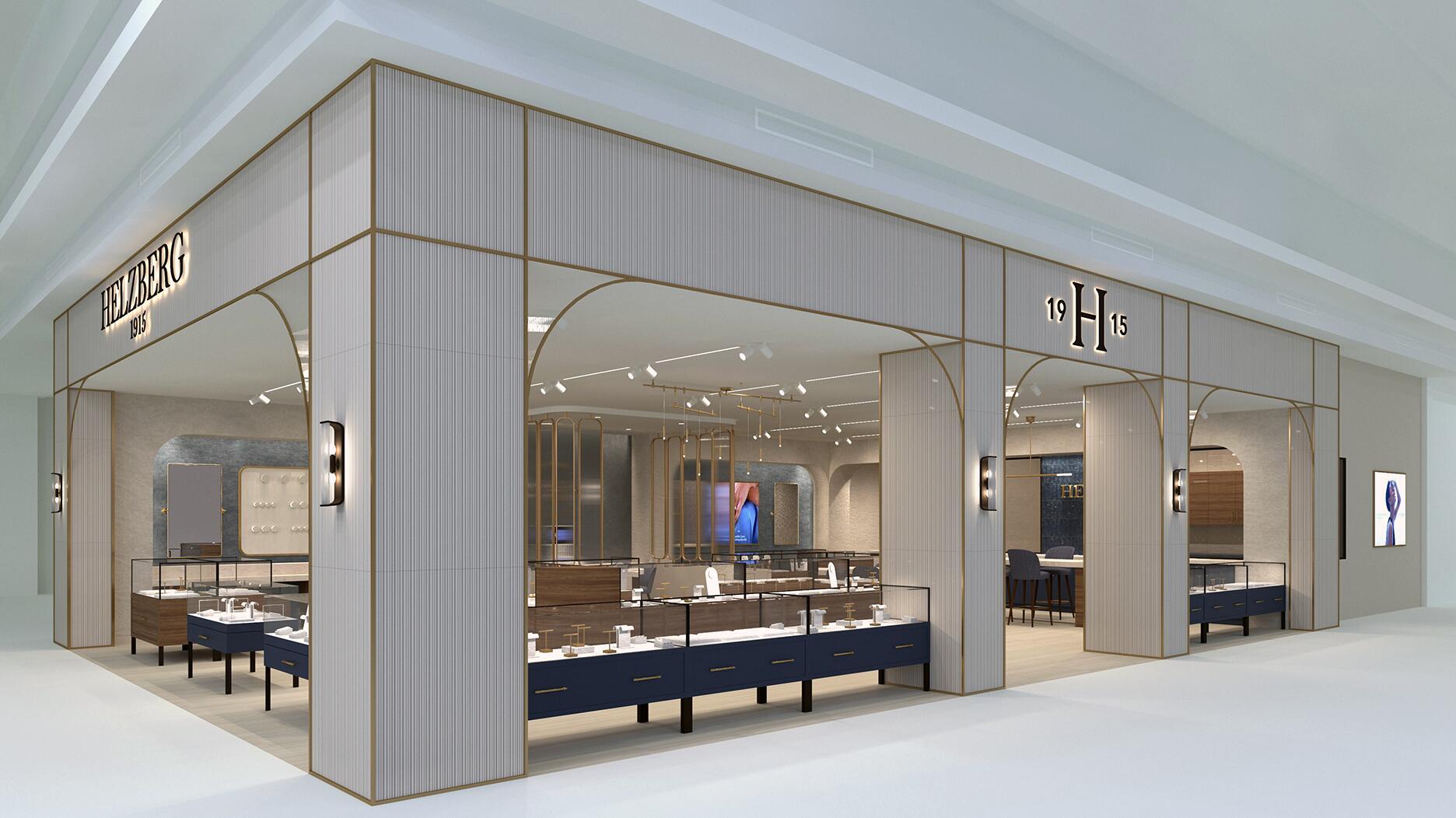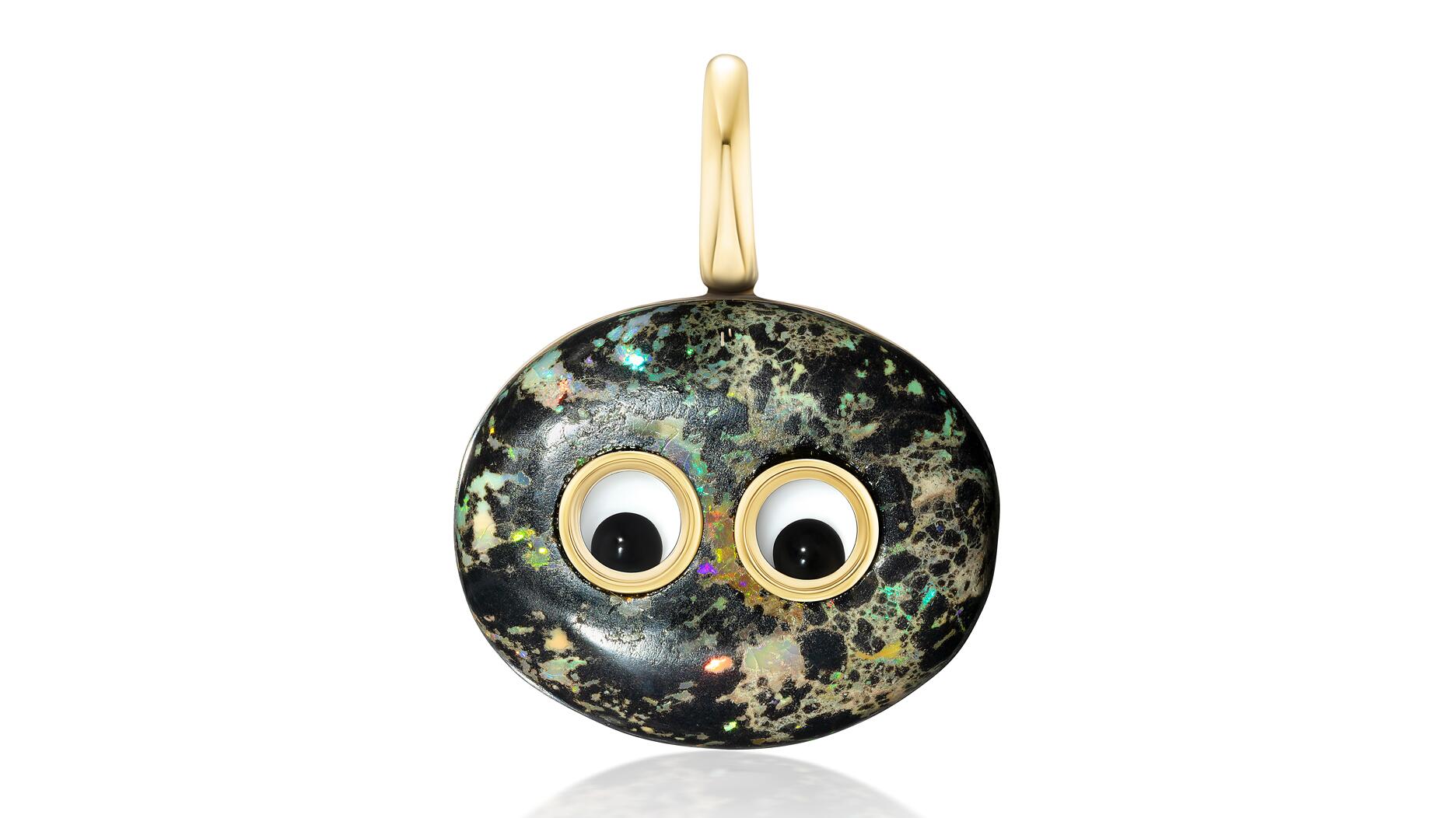As part of the leadership transition, Sherry Smith will take on the role of vice president of coaching strategy and development.
5 Things to Know About … Ammolite
Senior Editor Brecken Branstrator details 5 interesting facts about the gemstone that is cut from the fossilized shells of a prehistoric creature.

There’s a gemstone that’s garnering more attention that could speak to those who not only like gemstones with provenance but also with a pretty cool back story.
Ammolite, the iridescent gemstone that’s actually cut from the fossilized shells of a prehistoric creature, comes from only one source only.
The gems have a truly fascinating story; here are five things you should know about them.
1. Nomenclature is key. There’s a difference in the names when it comes to gem versus fossil.
According to the GIA’s Gems & Gemology, ammonites were squid-like creatures with sharp, beak-like jaws, a spiral shell and tentacles. They went extinct about 66 million years ago.
Ammolite, meanwhile, is the trade name for the iridescent, nacreous layer of the shell of fossilized ammonite. Commercial quantities of gem-quality ammolite are only known to come very a few specific types of ammonite shells, the G&G article said.
The GIA said that a number of things must happen for ammonite to become an ammolite gem. It has to be buried quickly, deprived of oxygen, protected from heat and excessive weight, and not be scavenged.

2. They only come from one place. The ammonite sea creatures were around long before there were seven continents. According to the GIA, there were only two large landmasses--Gondwana and Laurasia--on the Earth’s surface when they lived.
This helps explain how the water mass in which they lived (the Bearpaw Sea) during the Late Cretaceous period now is a rock formation that stretches through Montana, and Alberta and Saskatchewan, Canada.
While fossilized ammonites can be found in several places around the world, a small area within the Bearpaw Formation, the name for the area leftover from where sediment settled on the bottom of sea, in Southern Alberta, Canada, is the only location where they have been turned into gemstones.
The International Gem Society estimates that only about 5 percent of the ammonites found in Alberta have suitable gem material on the shell surface.
3. They are fairly new to the gem and jewelry world. Despite their historic formation, ammolite is one of the few new natural gems to be introduced into the market in the past 70 years.
It only started to appear in jewelry in the 1960s and was recognized as an organic gemstone in 1981 by the
And like tanzanite and sugilite--introduced to the trade in 1967 and 1980, respectively--ammolite occurs in large enough quantities to make it “economically significant,” Gems & Gemology said.

4. They vary in color and some colors are more valuable. Ammolite can come in any color in the rainbow but most are green and red. Blue and violet are rare and, typically, more valuable.
As is true for most gems, cost depends greatly on the color, which is graded on a scale from one to five. The brightness of the gem also is judged.
Ammolite also can show patterns of fractures on the surface, like stained glass. The GIA said that while fracture ammolite was common in the past, production today mostly includes sheet ammolite.
5. Demand is expected to increase. Korite International in Canada, the largest supplier of ammolite, said that it will quadruple the size of production within the next 12 months as more consumers across the world start to discover and buy the gemstone.
According to a local news story, the company currently is mining two acres a year but will expand to eight over the next year. Production is expected to increase from the current eight million carats per year, which already was increase over last year, to double within the next two years to meet demand across the globe.
The company even has targeted the United States as one of the markets where it believes ammolite could do well.
The Latest

It marks the third time the country has headed the Kimberley Process. Ghana will serve as vice chair.

The new Bulova x Stetson designs highlight two animals often associated with the American West—the bison and the Texas Longhorn.

How Jewelers of America’s 20 Under 40 are leading to ensure a brighter future for the jewelry industry.

Its residency at Yamron Jewelers will run through May 2026.


From influential executives to innovative designers, we pay tribute to the people we said goodbye to this year.

The retailer is expanding into areas with large Indian and South Asian populations.

Roseco’s 704-page catalog showcases new lab-grown diamonds, findings, tools & more—available in print or interactive digital editions.

The Italian brand has opened its first flagship amid the peaks of the Dolomites in Madonna di Campiglio, Italy.

The new curation at the Natural History Museum of Los Angeles County showcases rare gem and mineral specimens in their uncut, natural state.

The couple pleaded guilty to concealing at least $127 million in cash transactions at its precious metals businesses.

Consumers shared concerns about prices, inflation, tariffs, trade, and politics in the survey’s write-in response section.

In February 2026, the auction house will move its headquarters to the former Steinway Hall, a neoclassical landmark on Billionaires’ Row.

The new show will take place Jan. 23-25, 2026.

The former BHP Billiton leader and Gemfields chairman is remembered for his influential leadership throughout his 50-year mining career.

The LVMH-owned brand has partnered with the costume design union to revamp its award for 2026.

The luxury titan inked a deal to acquire an initial minority stake in the jewelry manufacturer with a pathway to full ownership by 2032.

The company’s curation of unsigned vintage and estate jewelry debuted at the Bloomingdale’s in Costa Mesa, California.

In the recent multi-shipment seizure, CBP also found counterfeit Audemars Piguet, Moncler, and Chrome Hearts items.

Jewelers of America execs and National Jeweler editors discuss tariffs, the sky-high gold price, and the engagement that broke the internet.

The luxury goods company said founder Ippolita Rostagno will remain at the brand’s helm.

Laura Burdese, who joined the Italian luxury brand in 2022, will take on the role in July.

Need a gift for the cat lover who has everything? Look no further than our latest Piece of the Week.

It purchased the “Grosse Pièce,” an ultra-complicated Audemars Piguet pocket watch from the ‘20s, for a record-breaking price at Sotheby’s.

The lab-grown diamond grower now offers custom engagement and fashion jewelry through its Kira Custom Lab Jewelry service.

Chandler got his start at Michelson Jewelers and has served as DCA president and CEO since 2001. He will retire at the end of the month.

The boutique is slated to open this week inside Terminal 8, offering pre-owned Rolex watches and more to international travelers.



























